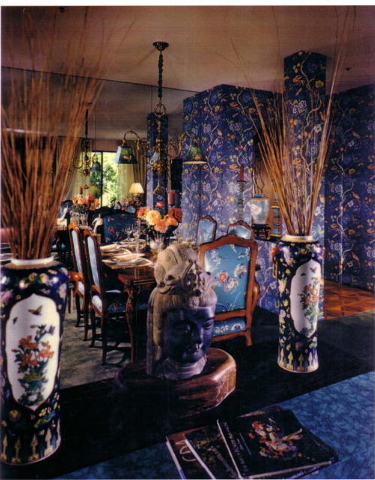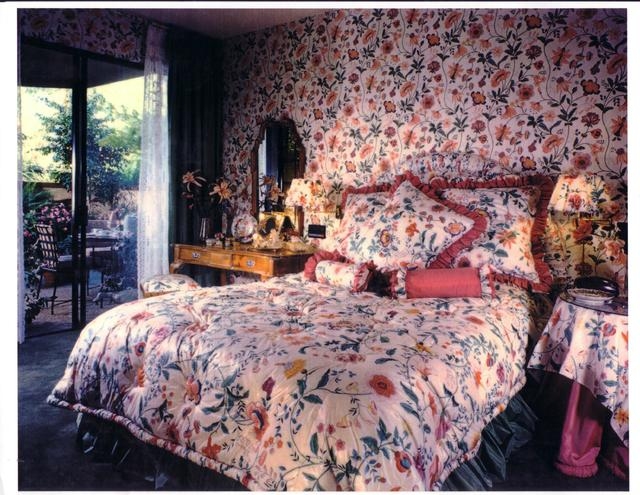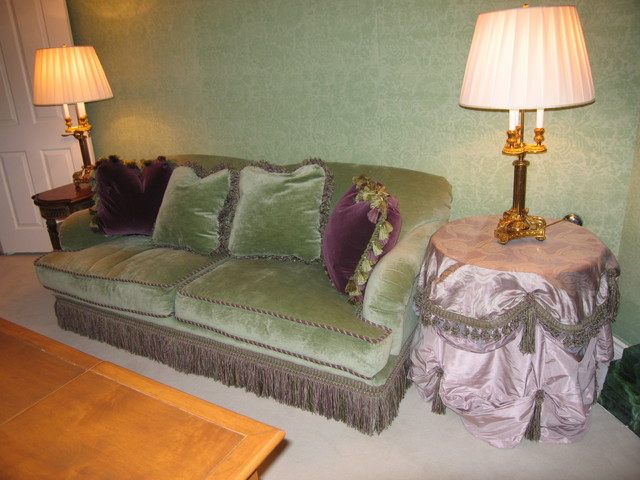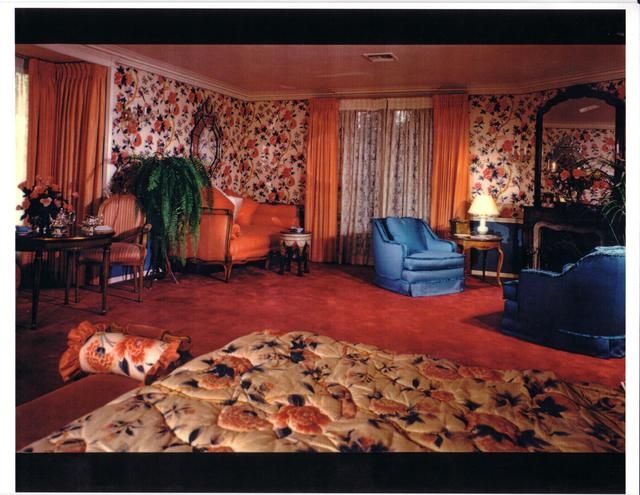Wall upholstery turns ‘regular to regal’
The heavy glass doors leading into the opulent lobby of my client’s new high-rise apartment closed quickly and without a sound as I made my way to the concierge desk and waited to be announced. Running a little late, I tried to remain calm as the uniformed clerk rang apartment 28-C and announced my arrival.
The apartment was quite large but not as big or as grand as the house he had recently surrendered in his latest divorce. Although he me to just “do it,” he did remind me that he’d always lived a certain lifestyle and that this would be no different despite the fact that he didn’t plan to remain in an apartment for very long. And with that he was gone.
Having worked for this client before, I knew better than to just go ahead and “do it” without having him involved and obtaining his blessing as we went along in the design process; just as I do for every client. Somewhat familiar with the layout from floor plans, I began my on-site inspection, abruptly stopping in the master bedroom as I suddenly had one of my creative brainstorms.
Why not suggest upholstered walls? I’d used it from time to time in very large and imposing rooms, as well as smaller and more intimate spaces to add color, pattern and texture to the design. I always loved the look and thought that my client would too.
We both were detail-oriented and, in today’s homes, the realization of beauty is in the details. I was sure my client would love beautiful and functional wall upholstery (also known as wall cladding) because nothing works so well for turning “regular to regal,” not to mention enhancing acoustical insulation and sound qualities.
I thought how perfect it would be in his master bedroom because of the peace and quiet it would engender. It’s been my experience that when you walk into a room that has upholstered walls there’s a certain incredible stillness (sometimes referred to as “dead sound”) that nothing can replicate. Sound can no longer bounce all over the room, which is what makes it so beneficial in library/studies, dining rooms, home theaters and powder rooms as well as on yachts where everyone is so closely quartered that wall upholstery can help to provide more privacy.
Returning to my office, I sat down to write a note to my client detailing my findings and especially my thoughts about the benefits of wall upholstery for his master bedroom. I began by telling him that it was a time-honored and practical design technique dating back to an era before paint and plaster were used in castles of the Old World when stone walls were covered with fabric. Large, thick wall coverings, tapestries and draped walls were used then for soundproofing, warmth and eventually for interior design. (I thought this would appeal to him being such a history buff.)
I went on to say that with a talented installer and the right fabric, magic can be created by changing the visual perception of a room while at the same time enhancing its architectural details. Wall upholstery, I pointed out, can create illusions of another era, change a dark room to light or add excitement to an otherwise dull and featureless room; though not implying for a moment that his was such a space!
Continuing, I made sure to mention that along with creating a true feeling of rich coziness that would literally thrill him, wall upholstery would also offer texture, color and patterns; and he could literally use anything that his heart or budget would allow: leather, suede, ultra suede, mohair, silk , chenille or linen.
And no matter the look (patterns or no patterns, squares, rectangles or whatever), we would be sure to aim for a “clean finish,” in which no additional trim or cord would be used. The walls would be completely covered in stretched fabric from ceiling to baseboard without interruption.
I then added that although upholstered walls are thought of as a luxury treatment (I knew he would like hearing that!), cleaning them is as simple as vacuuming the walls with an attachment on low suction. And for a spill or stain, the walls could be cleaned much the same way as you would clean upholstery or else have the fabric pretreated for staining.
Finally I told him that it would offer an array of both aesthetic and functional benefits over traditional wallpaper or paint. Using upholstery on the walls would soften edges and round corners, an effect you simply can’t ever achieve with paint or wallpaper.
Furthermore, unlike paint, it wouldn’t ever chip or crack while offering the flexibility and softness to avoid wrinkles and other related problems that can develop with wallpaper. Scratches, dents and discoloration on the walls, I pointed out, will no longer be visible if wall upholstery is used.
I concluded by saying that the alchemy of wall cladding works equally in any kind of home, from traditional to contemporary and that it isn’t necessary to own a castle or museum to turn ordinary into elegant and plain into palatial. I assured him that wall upholstery would turn the bare walls of his master bedroom into a beautiful, inviting work of art and that the finished space would be one of sophistication and luxury specially crafted to specification.
Note: My client’s bedroom walls were upholstered in a beautiful pastel shade of faux leather also used on his sleigh bed with matching faux goatskin cabinetry featuring motorized night tables. Wall upholstery once again won the day and fulfilled his desire for texture, a degree of softness and quiet elegance.
Stephen Leon is a licensed interior designer and president of Soleil Design; he has been designing and manufacturing custom furniture and cabinetry for more than 25 years. He is president of the Central California/Nevada Chapter of the American Society of Interior Designers. Questions can be sent to soleildesign@cox.net.




















